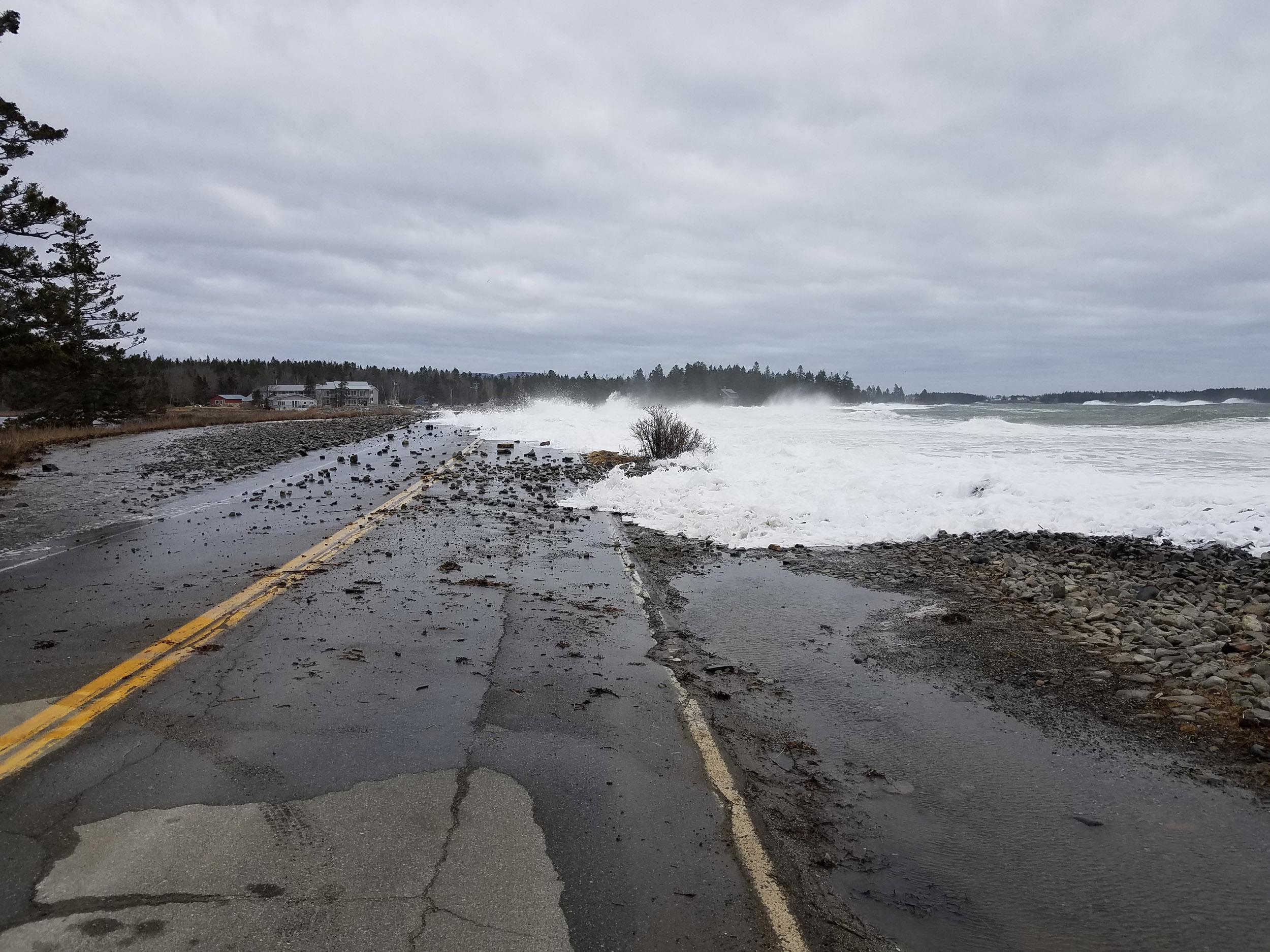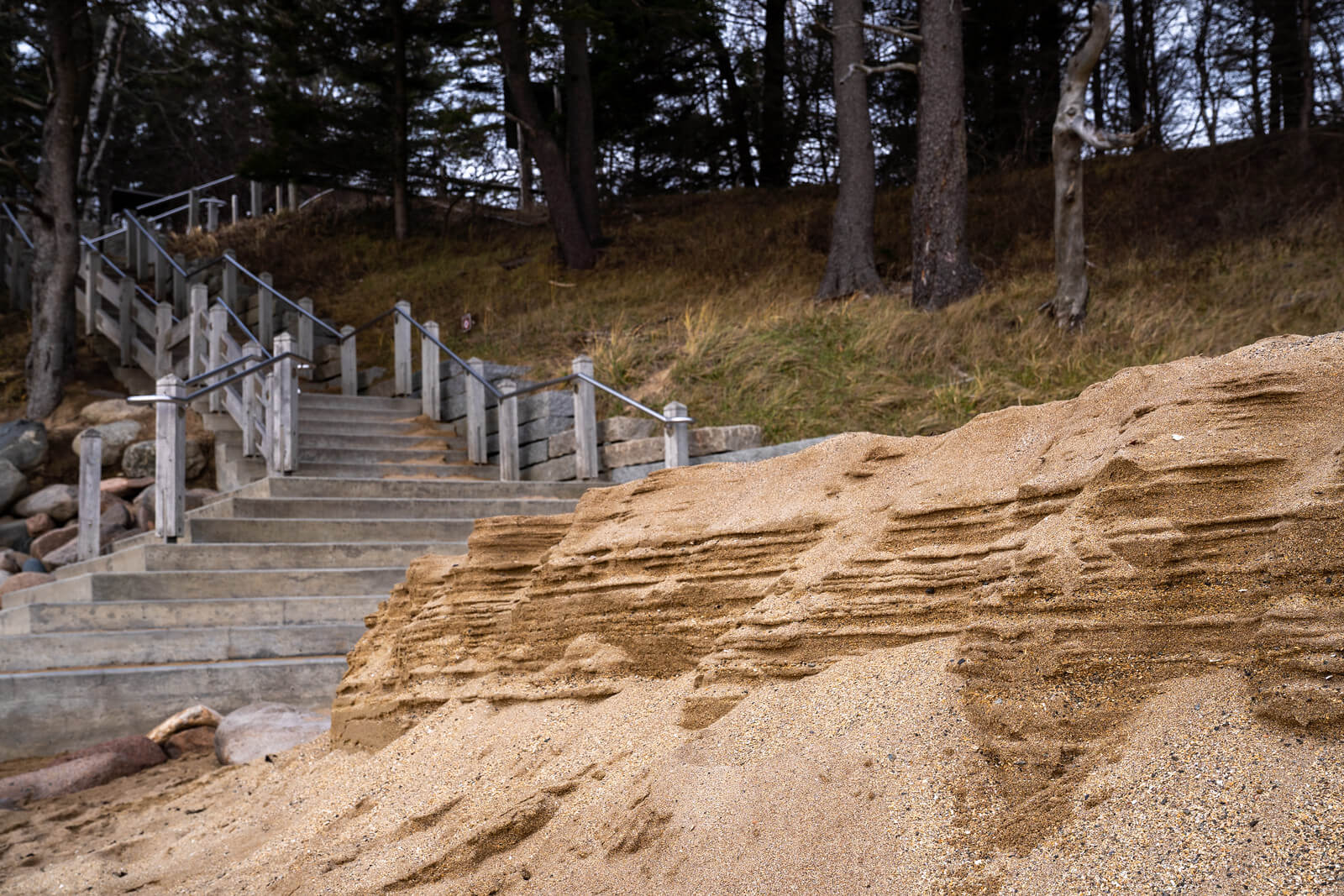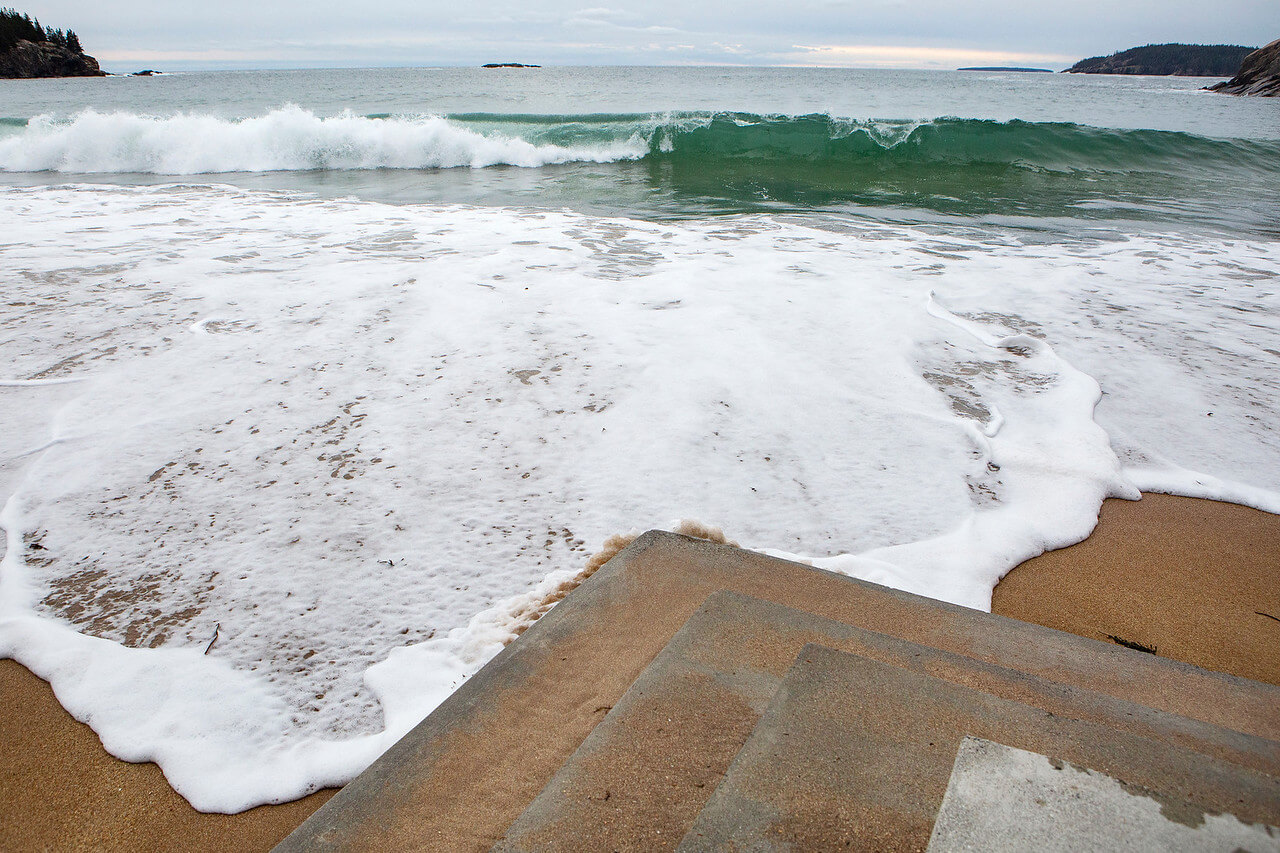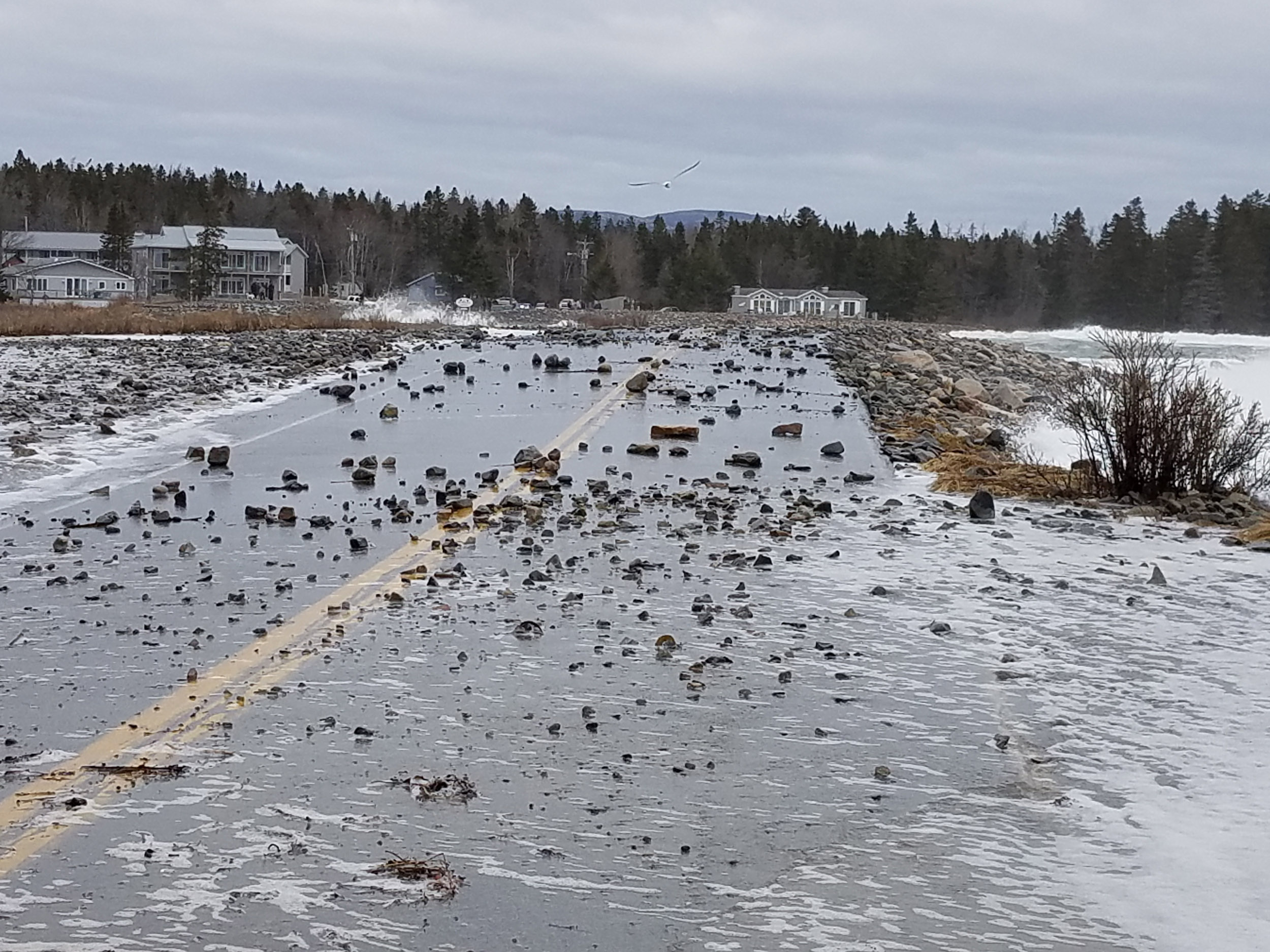Acadia’s climate has always changed. Melting glaciers, rising seas, forest fires, shifting plant and animal populations, and other changes have been occurring in Acadia for thousands of years. Ancestors of the Wabanaki people lived through and adapted to these changes. They transferred knowledge across generations that sustains their cultural and community connections to the place we now call Acadia, which substantially contribute to our understanding of this place.
This change accelerated in the last few centuries as European settlers cleared forests, filled wetlands, built roads and other infrastructure, and as the owners of local and distant industries polluted the air, land, and water.
Acadia National Park is now a measurably different place than it was at its founding just over 100 years ago. While its beauty endures, its forests, lakes and coasts are being altered by people through land uses, pollution, tourism, invasive species, and climate change.
Acadia is seeing longer growing seasons and fewer species that we know and love. Less biodiversity, more invasive species, and extreme weather events are damaging landscapes, cultural resources, and infrastructure.
Increased Precipitation
Acadia’s average annual precipitation increased by roughly six inches over the past 100 years and the park is experiencing more frequent summertime droughts, intense fall rainstorms, and warmer winter temperatures that result in less snowpack and spring runoff.
Rising Ocean Temperatures
The normally cool Gulf of Maine, which surrounds Acadia National Park, has risen approximately 3°F over the last century. On the surface, this may seem like a small difference, but it means the Gulf of Maine is warming rapidly and is expected to warm much faster than most of the world’s oceans. The Gulf of Maine is one of the fastest warming areas of the global ocean. Frequent marine “heat waves” are changing how animals feed and migrate and altering tide pool communities.
Sea Levels are Rising
Sea levels have risen by eight inches since 1950, and growing seasons have lengthened by more than two weeks. Shorelines are eroding, including Wabanaki heritage sites.
The Ocean is More Acidic
Since the industrial revolution began, the acidity of the ocean has increased by 30%, a faster change than any known change in ocean chemistry in the last 50 million years. More acidic oceans make it difficult for ocean, like clams and snails, to form and maintain shells.
Rising Temperatures on Land
The annual average temperature at Acadia has risen 3.4°F over the last century, resulting in warmer summer temperatures, longer growing and tourism seasons, and damage to park cultural resources from more frequent cycles of freezing and thawing. The warming we expect by the end of the century is approximately ~5-13°F; It took only 8°F to transition from the glacial maximum 20,000 years ago (when Acadia was covered by a mile of ice) and the beginning of the century.
Increase of Pests and Disease
Acadia’s visitors are now becoming accustomed to the health risks represented by Lyme and other diseases carried by ticks, with warming implicated in the increase in ticks and these diseases throughout coastal and southern Maine.
Longer Growing Seasons
Maine has been experiencing earlier springs, later falls, and much longer growing seasons.
Native Plant Decline
One of every six plant species found on MDI when Acadia was founded no longer occurs on the island, and many more native plant species have declined in abundance.
Increasing Spread of Non-Native Plants
Non-native plants have become more common and are crowding out native trees, wildlife, and plants.
Increasing Plant Drought and Heat Stress
Acadia is mostly forest, and cold-climate red spruce makes up 40% of the forest in Acadia. Red spruce is at risk from summer drought and winter warming and is predicted to lose suitable habitat. Acadia’s forest composition will likely shift away from drought-intolerant spruce/fir forests to hardwood forests more commonly found to the south.
Increasing Forest Pests and Diseases
Introduced insect pests threaten trees in park. The red pine scale insect killed all the red pines throughout the park in just a few years. Others, such as emerald ash borer and hemlock woolly adelgid, are expected to spread to Acadia in the near future.
Increasing Visitation
Visitation to Acadia may increase by 40 percent or more by 2060 as warmer weather lengthens Acadia’s visitation season, and extreme heat in other areas of the country that makes visits to northern sites like Acadia more likely.
![]()
 Join
Join Donate
Donate Acadia National Park
Acadia National Park




